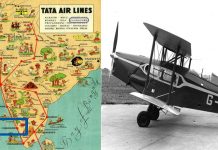20 Pictures Of Abandoned Aircrafts We Cannot Look Away From
Here are 20 beautiful and sometimes stark images of abandoned airplanes that stay with us, as a reminder of how time changes all, for everything.
20 THE CURIOUS CASE OF THE BALI BOEING
To the south of the Bukit peninsula in Bali, you can spot a very well-preserved Boeing 737 just lying about in an open field next to what used to be a limestone quarry.
 No one knew how it got there, and who brought it – and most importantly, why it was brought to the place where no airplanes should be at.
No one knew how it got there, and who brought it – and most importantly, why it was brought to the place where no airplanes should be at.
It is right next to the Raya Nusa Dua Selatan road, five minutes from the very popular Pandawa beach so it’s not exactly hidden from the world. Most believe it was brought there to be turned into a restaurant but the owner ran out of investment, and so just dumped the plane and the idea and moved on.
19 THE GROUNDED FOREVER KEE BIRD

The picture is misleading – this was how the plane looked before an attempted rescue mission. It was documented in a Nova episode “B-29 Frozen In Time”. This particular Kee Bird was a US Air Force commissioned Boeing B-29 Super-Fortress of the 46th Reconnaissance Squadron and was flying a secret mission during the Cold War. It was supposed to be flying to Greenland and back when the pilot got disoriented and changed directions, finally making an emergency landing on a frozen lake in northwest Greenland on February 21, 1947. In 1994, a privately funded mission tried to rescue it but ended up destroying the wreckage when a fire spread. The plane still lies where it landed, but now in burnt tatters.
18 ABANDONED MIGHT
The military might have forgotten their old and faithful birds that led to great victories, but that doesn’t mean they will let anyone disturb the haunting resting places of their decommissioned airplanes.

Some aircraft crashed in remote and far-flung areas where they could never be recovered.
A few such Douglas DC-3 reached an abandoned and rather haunted place in Croatia, where trespassers are warned off with the presence of landmines. The people who took this picture apparently asked a few local children to lead them to this place on the pretext of finding sweets – and one child did step on a mine and get badly hurt. Is the picture worth the trauma? You decide.
17 THE ULTIMATE BOEING 747 FACE-OFF

An urban explorer group that calls itself SVKKK prides itself in taking photographs of urban spaces – and in one such jaunt, they stumbled upon an airplane graveyard a few miles out of the city. They were lucky enough to find two Boeing 747s. These giants once ruled the skies as part of North West’s fleet before it merged with Delta and faded away from memory. All the instrument panels of these aircraft had been removed which means they were being kept around only to be reused or sold off as scrap metal. Soon after these pictures were taken, the airplanes were dismantled – all that remains today of these giants are the scuff marks on the tarmac.
16 THE REMAINS OF A RATHER INFAMOUS AIRCRAFT

The skeletal remains in this picture belong to the Fairchild C-123 Provider plane, best known as the transporter plane in the Nicolas Cage and John Travolta starring Con-Air. However, that’s not the reason for this particular carrier’s infamousness. This was the plane used by the special forces to spray Agent Orange on acreage upon acreage of Vietnam’s forests, and to a lesser extent in Laos and Cambodia as well. This particular herbicide was a defoliant – the idea was to raze the forests the Vietcong were hiding in. Sadly for the millions of Vietnamese exposed to this dioxin-containing chemical, the ramifications were far worse. The Red Cross estimates that more than 1 million people have major health problems due to exposure, and the continuing genetic damage is critical.
15 A MACHINE NOW PART OF THE STARK LANDSCAPE
How long does a thing need to lie before it eventually becomes a part of the surroundings? In the case of this ghostly wreckage, it’s a good number of years of wasting away in the harsh African desert, before even the desert fauna adapts to it. Whether this plane made an emergency landing here or crashed, no one knows.

It lies in the middle of nowhere with no human contact at all – just the sun and the sand keep it abrasive company.
The sand itself seems to have accepted it, now conforming to the shape of the fuselage itself. It lies as a testament to the human spirit that is both strength and weakness at the same time.
14 PART OF THE OVERGROWTH

The Beechcraft C-18 was a popular small plane in its heydays, continuously produced from 1937 to 1969. Since it was in production for more than 32 years, it set a world record at the time. Some 9000 of these made and used as civilian and military aircraft for cargo, utility and passenger purpose. They could be nose-wheeled, tail-wheeled and even operated on skis and floats. This particular plane has been languishing in a rural airport hangar in New Hampshire, and the backstory remains hidden. The whys and wherefores apart, some 240 of this are still in the commission which also makes it a rather hardy plane to have existed this long.
13 AN ABANDONED BOEING UP-CYCLED INTO A HOME
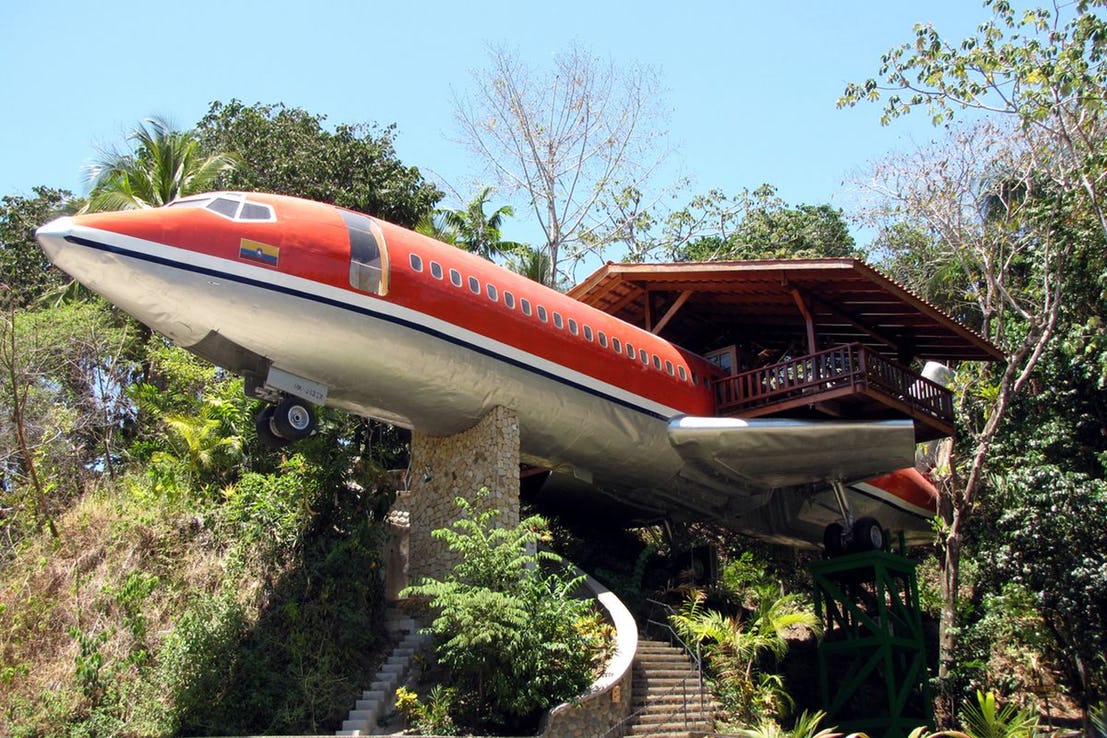
Abandoned planes the world over can look at this example in hope, if they were sentient beings. A man named Bruce Campbell bought a retired Boeing 727’s fuselage and installed it in a 10-acre suburban land he owns just outside of Portland, Oregon. He then set about converting it into a home after propping it up on concrete pillars, replete with a driveway. He has converted quite a bit of the inside into a real home and the aircraft has a makeshift shower as well – though he is still working on installing a working lavatory and some of the airplane’s original lights. He spent some $23,000 on the land purchase, but the fixer-upping of the plane has cost him another $220,000 already! The photo above is of a similar project at the Hotel Costa Verde, and is a tourist attraction.
12 A GHOSTLY SHELL OF A ONCE POWERFUL BEAST
The Douglas DC-3 ruled the skies for a little while, but its design and its eventual derivatives left a lasting impact on the aviation industry. Little more than 600 civilian DC-3s were produced, but there were many more military derivatives that literally won wars in their lifetime.
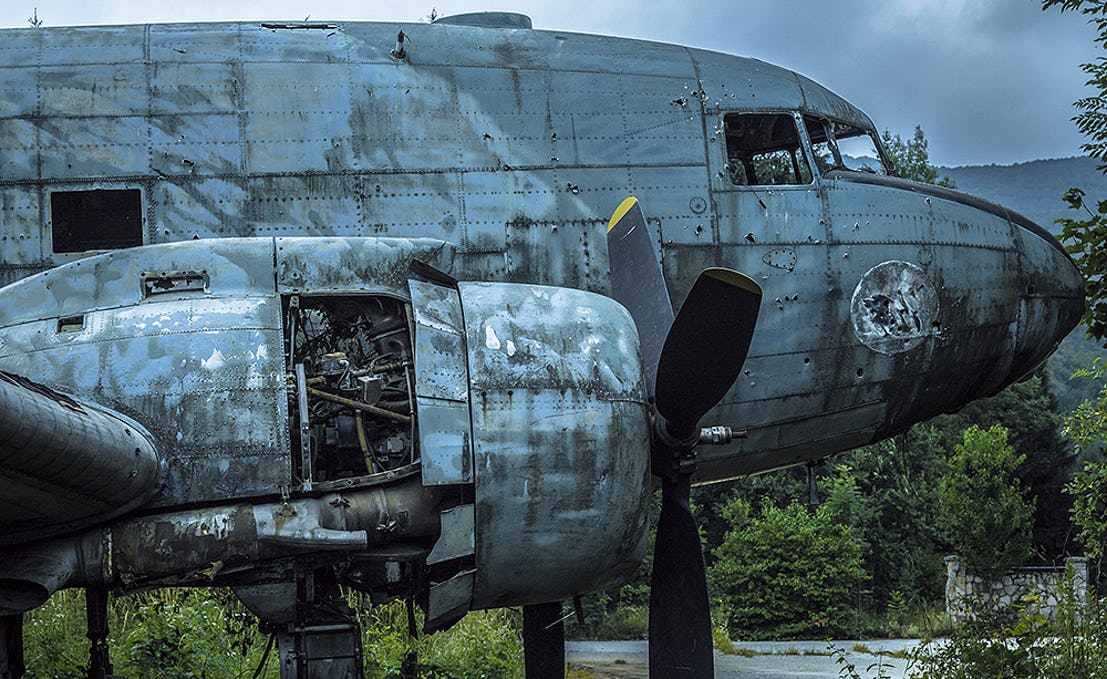
Plus, this was the first aircraft that could envision a future where an airliner could survive on just transporting passengers.
It was usurped by the DC-6 and the Lockheed Constellation in civilian use but in of 2013, some 2000 special forces derivatives of the DC-3 were still in commission. A very strong testament to this plane’s might and reliability. Seeing it as but a ghost of its magnificent past is but unnerving, to say in the least.
11 ABANDONED IN BANGKOK
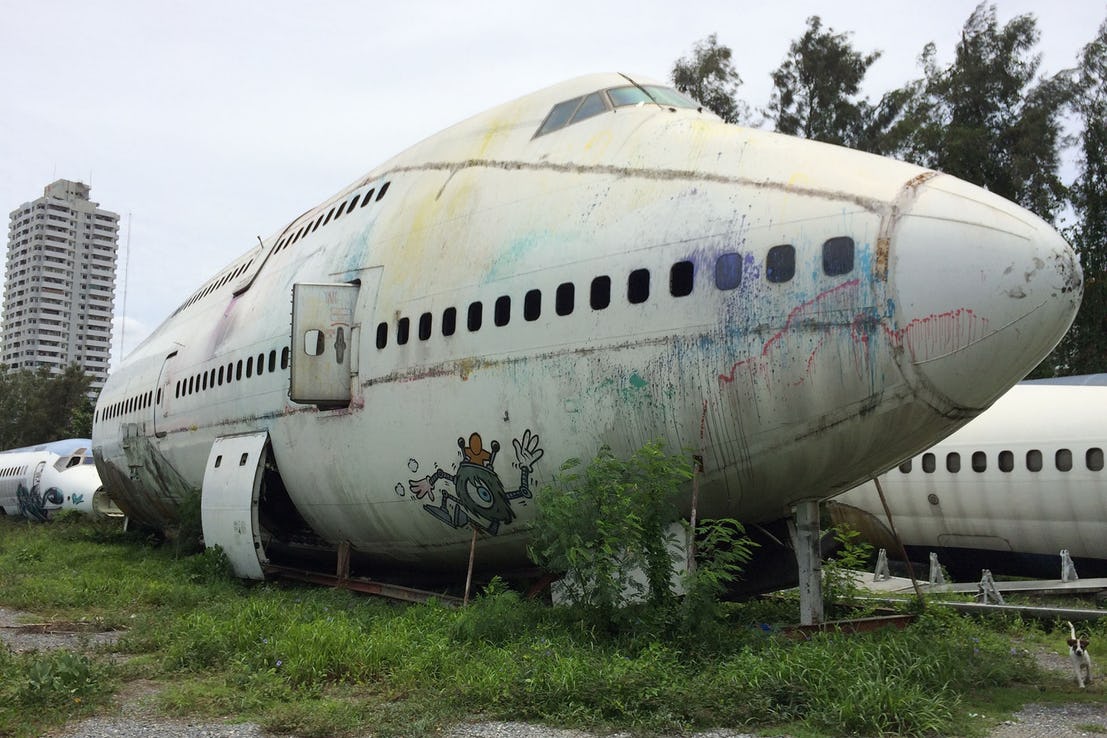
Away from the International airport in Bangkok is a field enclosed within tall buildings and a school on one side. Within this habitat, lie Bangkok’s discarded and decommissioned planes – stripped off all that is valuable and waiting to be turned into scrap metal. Most of the planes are Boeing 727s, erstwhile passenger planes that are now being used by the Bangkok’s homeless as a shelter till the time the authorities uproot them. The last we know of, these squatters charge a fee from the tourists who want to come and explore these godforsaken planes and they are poor enough to warrant it.
10 THE BLACK SANDED CRASH SITE IN ICELAND
The Sólheimasandur airplane wreckage is a rather famous one, and a vividly photographed one that. While the plane looks badly damaged, all passengers survived this crash – thus making it a rather unearthly sight, but not a haunting one.
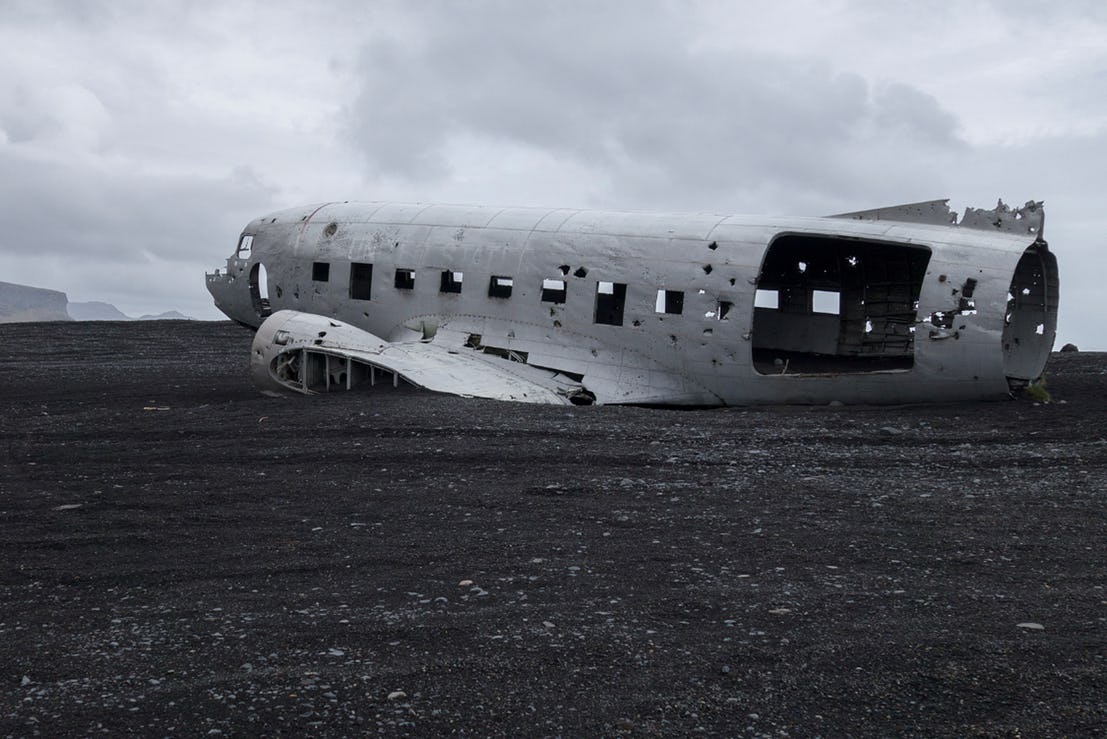
It’s located on Iceland’s southern-most coast between Skógafoss waterfall and the town of Vik.
To get to it, you need to drive past Skógafoss going East on Route 1 and cross a bridge with blinking yellow lights. From there, keep driving East for about 2 kilometers and then you’ll come across another dirt road turn off with a gate on your right. Park here and its a 4km walk to the wreckage. In case you are wondering, on Nov 24, 1973, this United States Navy Douglas Super DC-3 airplane crashed and was subsequently abandoned, with no fatalities involved.
9 THE LAST STALWARTS OF KHODYNKA AERODROME

If you ever got to Moscow, this was the place to go to with your friends and drink Russian vodka at. The airport opened in 1910 and its first flight left in 1922. Till the Bykovo opened in 1933, Khodynka was Moscow’s only airport. By mid-1940s, passenger flights had stopped here. Since then to its eventual closing in 2003, this airport was mostly used for the shipping of new aircraft. In 2016, the place was finally redeveloped and all the remaining and abandoned planes here – like the Sukhoi and Mikoyan-Gurevich (MiG) war machines had been moved to another site in Lukhovitsy.
8 ANOTHER BEECH IN THE MIDDLE OF NOWHERE
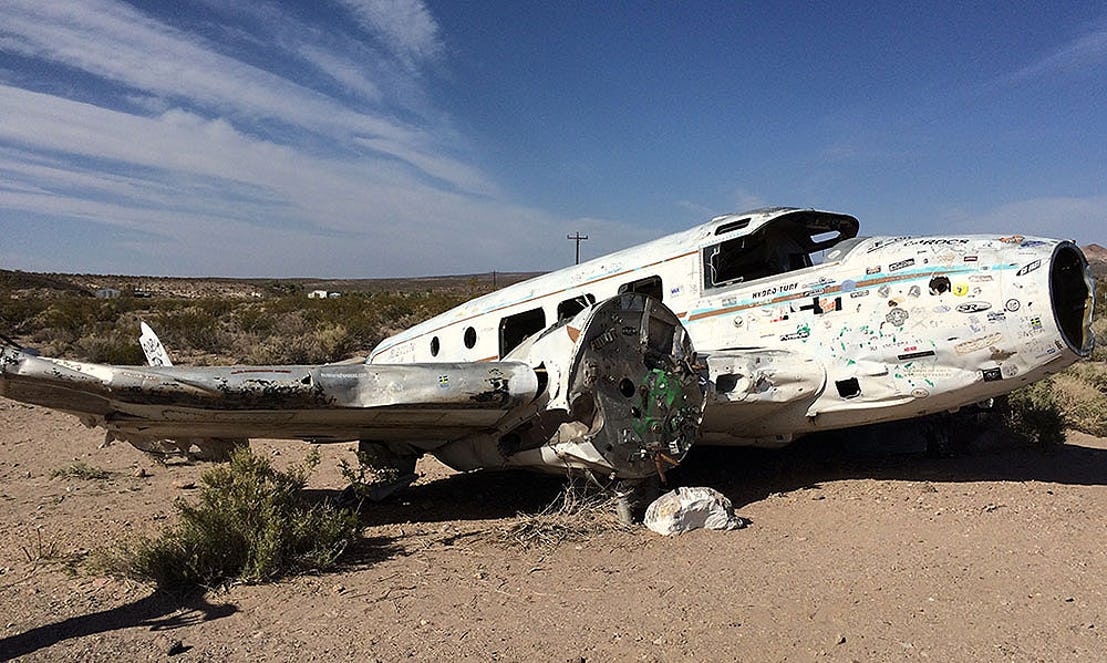
Most pictures of abandoned airplanes seem to have a relevant story behind them verifiable over the World Wide Web. No such luck with this picture that was originally shared on Flickr, and shows a pretty dilapidated Beech airplane stranded in the middle of nowhere in the hot, arid sands of what seems to be Texas or Arizona. The plane looks pretty dinged and dented so we assume this had to be an emergency landing of sorts; though the damage isn’t very extensive. That gives us hope that the passengers managed to make a lucky escape from their literal fall from the sky.
7 THE ARIZONA BONEYARD ART PROJECT
In one hot corner of Tucson, Arizona – there’s the Arizona Boneyard project. A deserted place that’s too sweltering to be worked at in the day, it houses a few abandoned and derelict passenger planes artfully strewn about.
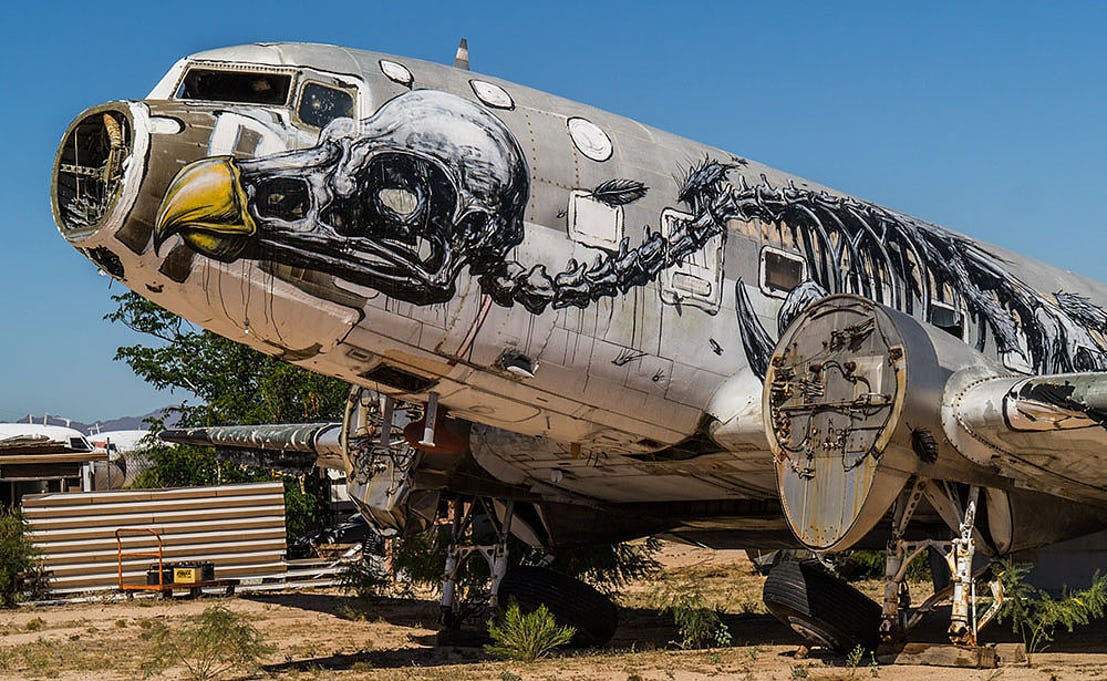
Here, artists come together to transform one man’s junk into another’s treasure.
This Boeing 727 has been painted by an artist called ROA – on one side he has painted an eagle, alive and bursting with ferocity. On the other side, perhaps to show the ruin of the now busted fuselage, he painted a skeleton of the bird. Goes on to show that life and death are perhaps two sides of the same coin!
6 WHERE THE JUMBOS GO TO REST
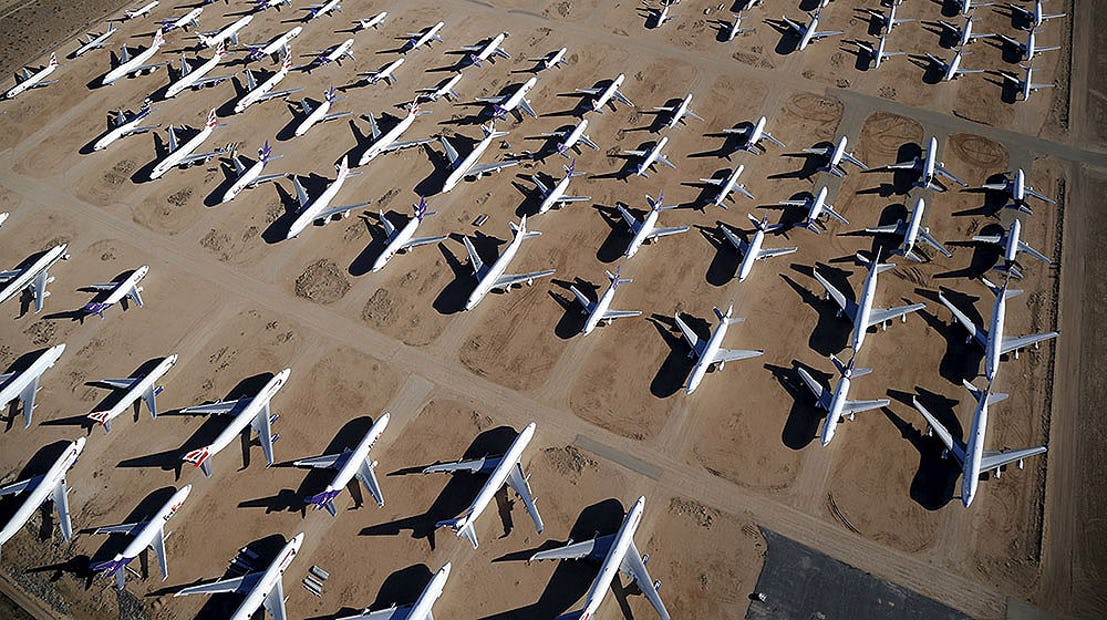
Once the Boeing 747s and the McDonnell Douglas DC-10s ruled the skies. But now the days of these sky giants are numbered because of their massive size, engine dependability and maintenance costs. The operating costs are too huge to be viable for today’s competitive ticket pricing and slowly but steadily, these planes are being decommissioned and retired. Ever wondered where these giants go to rest and be finally broken down for viable parts and metal? Try the Boneyard at the Southern California Logistics airport – here the landscape is ever changing as old relics are broken down and carted off to make space for the newer retirees.
5 A TREASURE HUNT IN THE MIDDLE OF NOWHERE
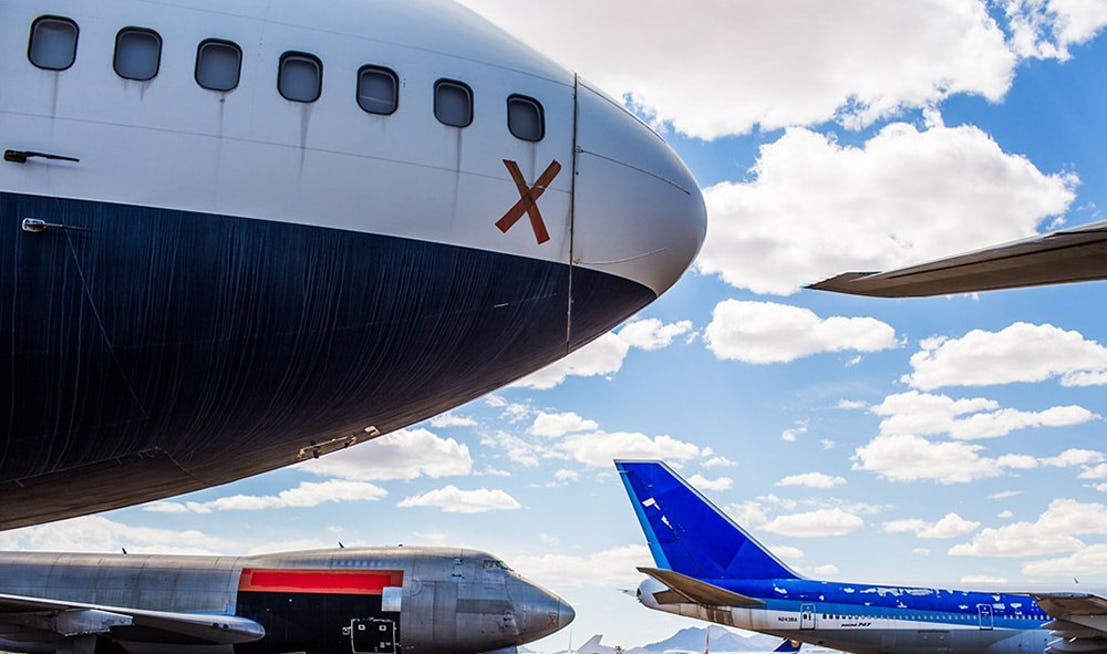
We are back at Tucson, Arizona – home to the world’s largest civilian aircraft boneyard named Pinal Airpark. This airplane-dusted acreage lies in the shadow of the Catalina Mountains and is actually 30 miles outside of Tucson. It’s Arizona so it is hot and dusty and while this is a civilian space, there are plenty of menacing military carriers and personnel around. 1200 acres of Arizona desert, littered with about 150 aircraft is a big, big space to explore – especially if you are souvenir shopping. You cannot get in here uninvited, but if you are looking to buy something to decorate a space with, it’s best to contact one of the aircraft carriers to get permission.
4 THE LAST SALUTE OF THE HIGH FLYERS
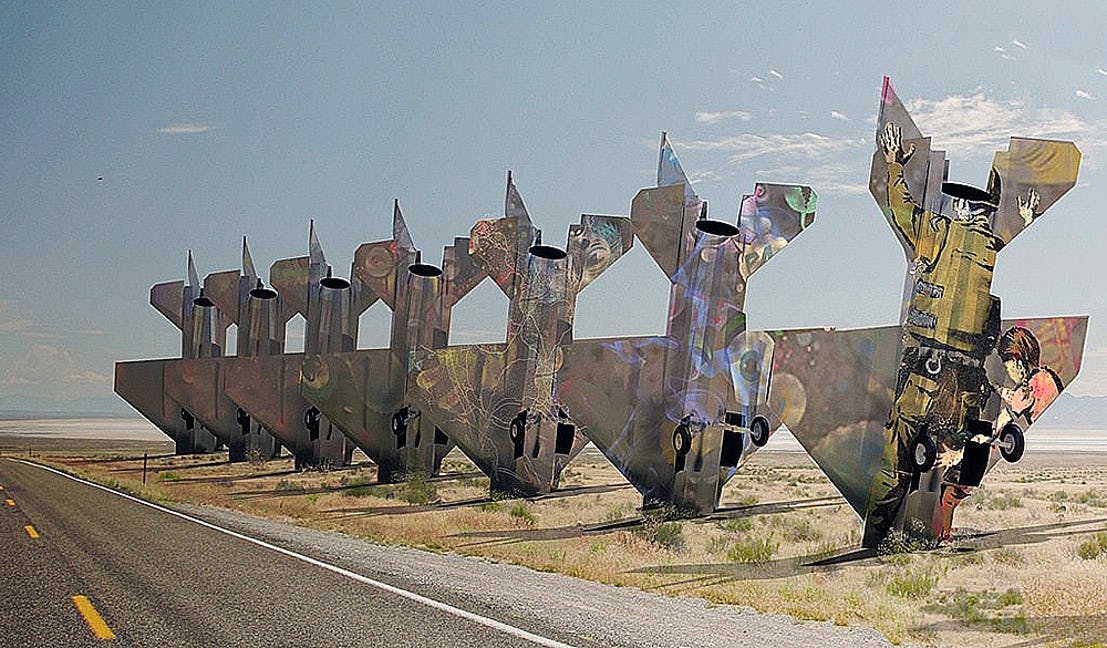
The F4 Phantoms were a legend – entering into US service in 1960 and staying put all the way till 1996 till they were finally pulled off and rested away, to rust in peace. With so many successful missions both domestically as well in the service of many other armies globally; the Phantom earned a whole troop of nicknames. Like “Snoopy”, “Rhino”, “Double Ugly”, and “Old Smokey”. It was also called the “Flying Anvil”, “Flying Footlocker”, “Flying Brick”, the “Big Iron Sled” and the “St. Louis Slugger”! So this picture is like the Phantoms giving themselves a final salute, considering it was called the “World’s Leading Distributor of MiG Parts” since it downed so many MiGs in its lifetime…
3 THE MIGHTY MIG NO MORE
The MiGs went down like flies in front of the F4 Phantoms, though they did hold their own admirably.
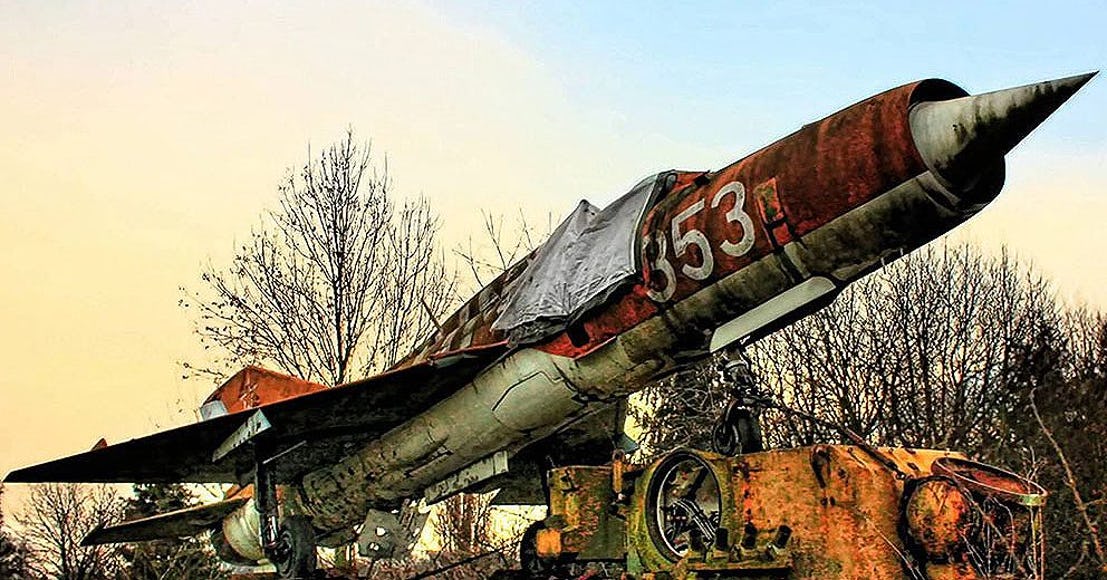
Used primarily by the Soviet Union, Russia and finally by India and Bulgaria – there are still enough MiGs in service proving its long-lasting capability.
This abject picture was taken at the abandoned Motor Technica Museum in the German city and spa town of Bad Oeynhausen. The image of a rusting MiG sitting on top of an equally decaying armoured road vehicle is rather evocative of a past long gone by and is probably the poster picture for the adage “how the mighty have fallen”!
2 GROUNDED SHARK
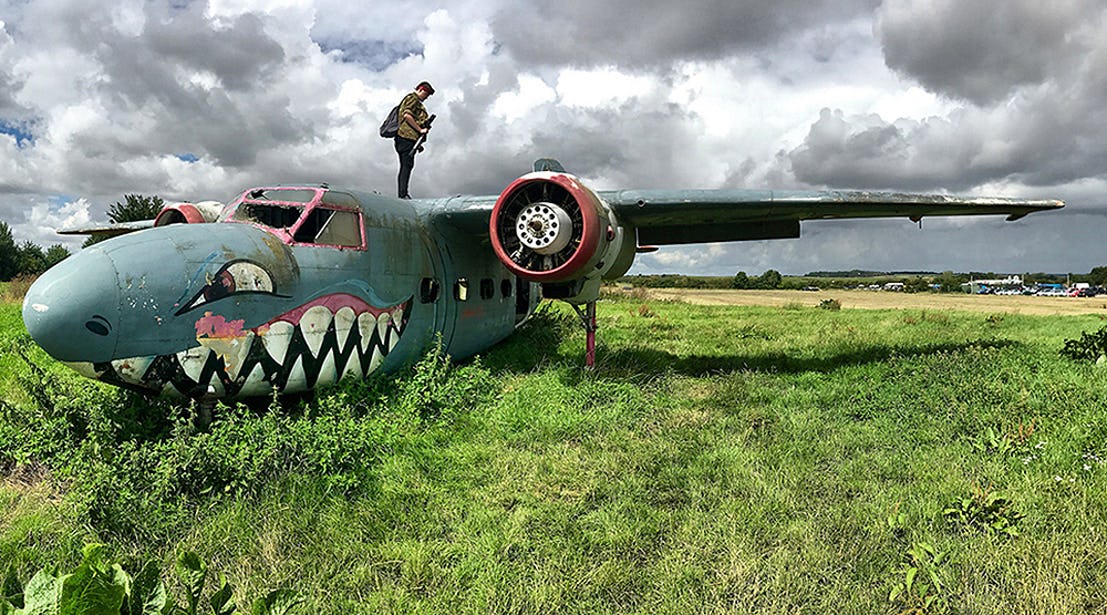
The Long Marston airfield was once the RAF Long Marston, a royal air force station used for training in the Second World War before it finally closed in 1954. Since then, it housed a tiny aviation museum and hosted events and shows for the people around the area till in 2015 a housing project took over. The airstrip was demolished and all homes, businesses, and establishments were forced to up and leave. Before it all went down, three airplanes were left languishing on the scene. One rather evocative one was the Percival Sea Prince, now languishing where it once adorned the airfield entrance.
1 THE AIRPORT THAT ONCE WAS A LIFELINE
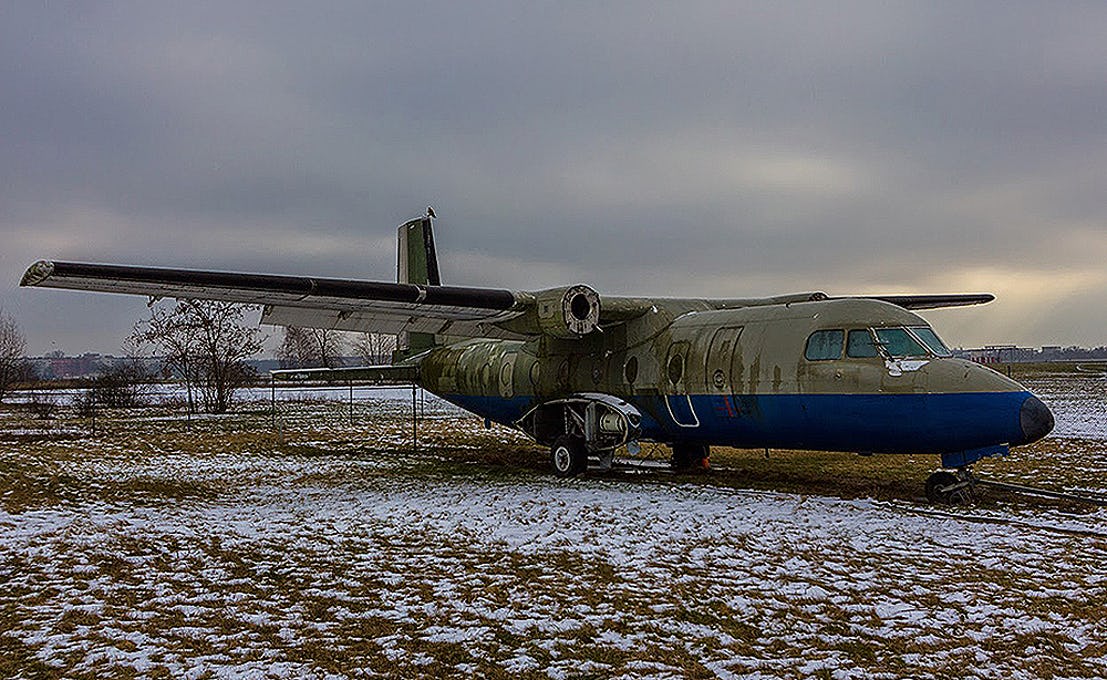
When the Berlin wall fell, there was cheering and rejoicing all around. Another casualty of Germany finally coming together as one country was West Berlin’s Tempelhof Airport. It was officially closed in 2008 and then given over to the public in 2010. Ever since then, people have come out to picnic at this prime piece of land that’s bigger than Monaco – standing at some 303 hectares just waiting to be commercialized. The people of Berlin are having none of it and refused to be sweet-talked into letting it turn back into an airport, or redeveloped into something else. While most airplane companies upped and left, a few abandoned aircraft still dot the place – like a gentle threat that what once was, could be the same again…
Sources: Wired.com, IBTimes.co.uk, Jalopnik.com.


